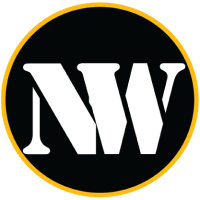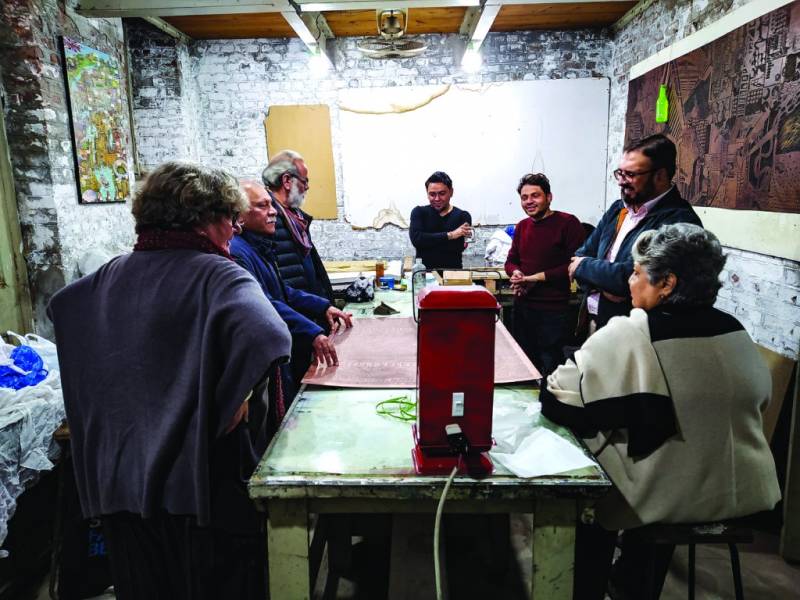
In the 1980s, NCA was becoming a formal degree imparting institution. Each of the three departments of Architecture, Fine Arts and Design also increased their annual intake of students up to 50 each. Within the Fine Arts department this relatively larger intake facilitated the creation of Printmaking and Miniature specializations. Design students were also introduced to printmaking through electives.
Naazish Attaullah passionately remembers how she and other faculty members sought support to acquire different machines for the studio. A Charles Brand Press – from a pioneer company known for its printmaking presses – was imported. Syed Babar Ali was requested to give the old Proofing press at Packages to NCA, which allowed for lithography plates. And special handmade paper for printmaking was imported by the college shop. The studio still has some of the old print machines for stone lithography from the Mayo School era.
The printmaking studio got its name “Ardeshir Cowasjee Print Studio” from the generous endowment given by the Cowasjee Foundation. Attaullah recalled Cowasjee’s visit to the Principal’s office offering to help. Upon being convinced of supporting the printmaking studio he brought out his Montblanc pen and wrote a note for the manager of his Bank to give NCA a sum of Rs 350,000. A note instead of a cheque drew puzzled responses and apprehension from the administration. Nevertheless, when Cowasjee’s handwritten note was taken to the Bank, the manager duly complied with the instructions. Probably it was the way of the legendary Ardeshir Cowasjee. Hence the studio was named after him.
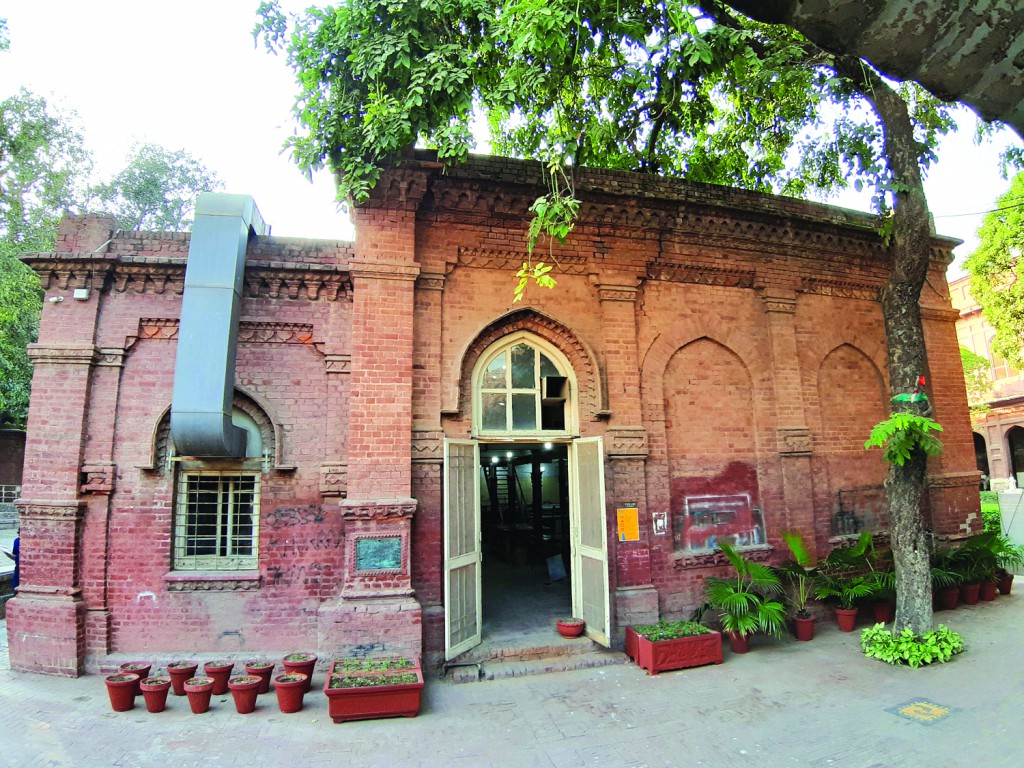
Anwar Saeed, Afshar Malik and Naazish Attaullah pursued teaching printmaking teaching vigorously. Though printmaking remained on the fringes of mainstream art practice in the country, it had nevertheless been used by a large number of Pakistani artists. Printmaking entails both creativity and technical skills to arrive at the right solution for the impact that a printmaker envisions. Artists like Meher Afroze, Naiza Khan, Sabina Gillani, Laila Rehman, Sabah Hussain, Atif Khan have particularly focused on printmaking.
There is relatively more interest expressed in printmaking nowadays.
“Trajectories,” a major exhibition of 19th-21st Century Printmaking in India and Pakistan, curated by Camilla H. Chaudhry and Dr. Paula Sengupta, was held at the Sharjah Arts Museum in 2014. It looked at how printmaking evolved in the Indian Subcontinent under colonial rule and its subsequent development after independence in India and Pakistan. The exhibition documented how from a medium of picture production or poster-making, Printmaking moved into the realm of artistic expression through Arts schools.
In 2014 the first International Print biennale was held in Karachi by VM Galleries which documented the work of more than seventy artists including Chughtai and Anna Maulka Ahmed. Romila Kareem, head of Printmaking Department at Karachi School of Arts, was the main force behind the idea of this project along with co-curator Riffat Alvi. Kareem did some impressive research to collect the history of printmaking in the country especially on the groundbreaking Ponce workshop. The print biennale had three sections: early masters of Pakistani printmaking starting from the 1950s, workshops conducted by international printmakers like Ponce enriching the printmaking work in Pakistan and contemporary printmaking in Pakistan.
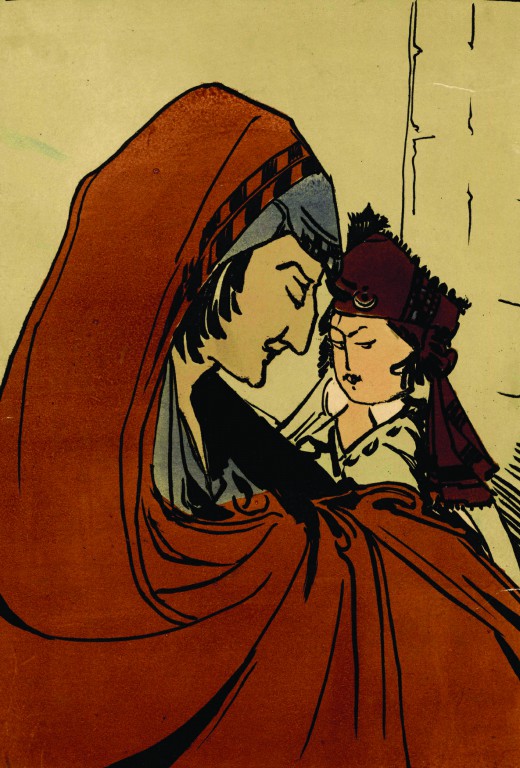
Teaching of Printmaking has also expanded beyond NCA and Punjab University to the Indus Valley School of Art and Architecture, Karachi School of Arts, Bahauddin Zakrya University, and the Centre for Excellence in Art and Design (CEAD), Jamshoro among other institutions.
As already mentioned, Printmakers are constrained by the expansive requirements of a Printmaking studio especially once out of college. Saad Ahmad, a Printmaker, has looked for solutions by establishing a private printmaking studio “Inksters” for professionals to work and exhibit. “Inksters” is based on modern studio management where a private studio facilitates the practitioners, helps in education by building a bridge with academic institutes by offering facilities, and a selling point by establishing a shop. It is a relatively new venture and only time will tell how it evolves in the Pakistani context.
With these developments it is expected that art of printmaking will continue to move forward in Pakistan.
The elaborate requirement for Printmaking has its strengths too. It gives the art a communal attribute where artists are not working in isolation but also come together to discuss among themselves how a work is progressing. NCA and other institutions have promoted that aspect. And one way of doing this is through ‘Box Print’ exhibitions. A print can have a number of editions or copies. With box print, a copy each goes to the studio organizing it, to the artist, and others could be sold through exhibition. Laila Rahman the current head of Printmaking in NCA, has organized several box prints since her association with the college began as a faculty member – with the idea to bring practitioners, faculty and students to work together. This also helps build a collection for the studio and opportunity for students to see at first-hand the work of different artists.
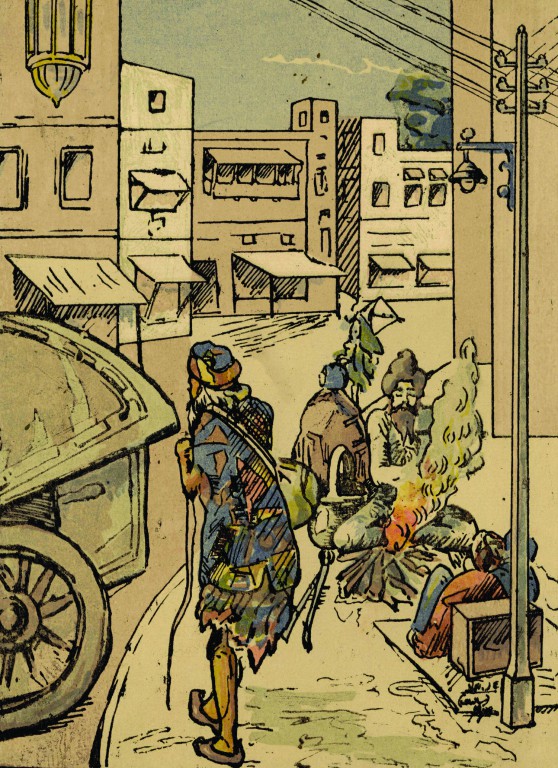
Recently, celebrated French-Algerian artist Rachid Koraichi came to NCA and worked in the studio to produce his work for the 2020 Lahore Biennale and also to teach the students.
The baton of Attaullah, Saeed and Malik has been passed on to Laila Rahman, Atif Khan, and Fatima Saeed among others at NCA. Printmakers are now also utilizing digital technologies and employ computers and printers to produce their work. From the times of the stone lithographs of the Mayo school to Charles Brand Press and now on Macs - NCA’s Cowasjee Studio is continuing to facilitate the creativity of a new generation of Pakistani printmakers.
The author can be contacted at smt2104@caa.columbia.edu
Naazish Attaullah passionately remembers how she and other faculty members sought support to acquire different machines for the studio. A Charles Brand Press – from a pioneer company known for its printmaking presses – was imported. Syed Babar Ali was requested to give the old Proofing press at Packages to NCA, which allowed for lithography plates. And special handmade paper for printmaking was imported by the college shop. The studio still has some of the old print machines for stone lithography from the Mayo School era.
The printmaking studio got its name “Ardeshir Cowasjee Print Studio” from the generous endowment given by the Cowasjee Foundation. Attaullah recalled Cowasjee’s visit to the Principal’s office offering to help. Upon being convinced of supporting the printmaking studio he brought out his Montblanc pen and wrote a note for the manager of his Bank to give NCA a sum of Rs 350,000. A note instead of a cheque drew puzzled responses and apprehension from the administration. Nevertheless, when Cowasjee’s handwritten note was taken to the Bank, the manager duly complied with the instructions. Probably it was the way of the legendary Ardeshir Cowasjee. Hence the studio was named after him.

Anwar Saeed, Afshar Malik and Naazish Attaullah pursued teaching printmaking teaching vigorously. Though printmaking remained on the fringes of mainstream art practice in the country, it had nevertheless been used by a large number of Pakistani artists. Printmaking entails both creativity and technical skills to arrive at the right solution for the impact that a printmaker envisions. Artists like Meher Afroze, Naiza Khan, Sabina Gillani, Laila Rehman, Sabah Hussain, Atif Khan have particularly focused on printmaking.
There is relatively more interest expressed in printmaking nowadays.
“Trajectories,” a major exhibition of 19th-21st Century Printmaking in India and Pakistan, curated by Camilla H. Chaudhry and Dr. Paula Sengupta, was held at the Sharjah Arts Museum in 2014. It looked at how printmaking evolved in the Indian Subcontinent under colonial rule and its subsequent development after independence in India and Pakistan. The exhibition documented how from a medium of picture production or poster-making, Printmaking moved into the realm of artistic expression through Arts schools.
From a medium of picture production or poster-making, printmaking in Pakistan moved into the realm of artistic expression through Arts schools
In 2014 the first International Print biennale was held in Karachi by VM Galleries which documented the work of more than seventy artists including Chughtai and Anna Maulka Ahmed. Romila Kareem, head of Printmaking Department at Karachi School of Arts, was the main force behind the idea of this project along with co-curator Riffat Alvi. Kareem did some impressive research to collect the history of printmaking in the country especially on the groundbreaking Ponce workshop. The print biennale had three sections: early masters of Pakistani printmaking starting from the 1950s, workshops conducted by international printmakers like Ponce enriching the printmaking work in Pakistan and contemporary printmaking in Pakistan.

Teaching of Printmaking has also expanded beyond NCA and Punjab University to the Indus Valley School of Art and Architecture, Karachi School of Arts, Bahauddin Zakrya University, and the Centre for Excellence in Art and Design (CEAD), Jamshoro among other institutions.
As already mentioned, Printmakers are constrained by the expansive requirements of a Printmaking studio especially once out of college. Saad Ahmad, a Printmaker, has looked for solutions by establishing a private printmaking studio “Inksters” for professionals to work and exhibit. “Inksters” is based on modern studio management where a private studio facilitates the practitioners, helps in education by building a bridge with academic institutes by offering facilities, and a selling point by establishing a shop. It is a relatively new venture and only time will tell how it evolves in the Pakistani context.
With these developments it is expected that art of printmaking will continue to move forward in Pakistan.
The elaborate requirement for Printmaking has its strengths too. It gives the art a communal attribute where artists are not working in isolation but also come together to discuss among themselves how a work is progressing
The elaborate requirement for Printmaking has its strengths too. It gives the art a communal attribute where artists are not working in isolation but also come together to discuss among themselves how a work is progressing. NCA and other institutions have promoted that aspect. And one way of doing this is through ‘Box Print’ exhibitions. A print can have a number of editions or copies. With box print, a copy each goes to the studio organizing it, to the artist, and others could be sold through exhibition. Laila Rahman the current head of Printmaking in NCA, has organized several box prints since her association with the college began as a faculty member – with the idea to bring practitioners, faculty and students to work together. This also helps build a collection for the studio and opportunity for students to see at first-hand the work of different artists.

Recently, celebrated French-Algerian artist Rachid Koraichi came to NCA and worked in the studio to produce his work for the 2020 Lahore Biennale and also to teach the students.
The baton of Attaullah, Saeed and Malik has been passed on to Laila Rahman, Atif Khan, and Fatima Saeed among others at NCA. Printmakers are now also utilizing digital technologies and employ computers and printers to produce their work. From the times of the stone lithographs of the Mayo school to Charles Brand Press and now on Macs - NCA’s Cowasjee Studio is continuing to facilitate the creativity of a new generation of Pakistani printmakers.
The author can be contacted at smt2104@caa.columbia.edu

